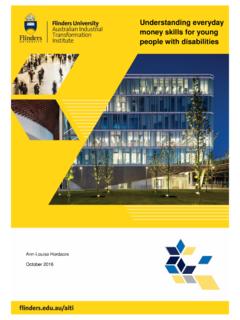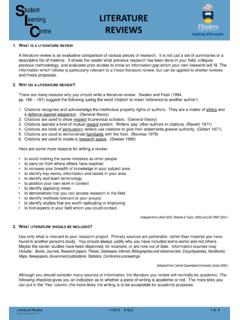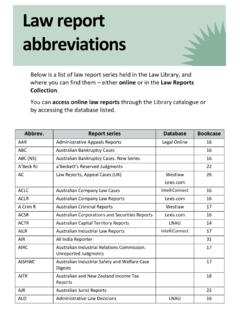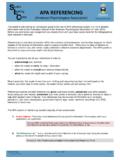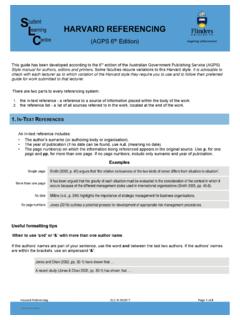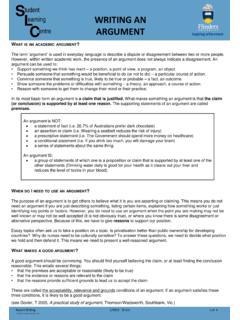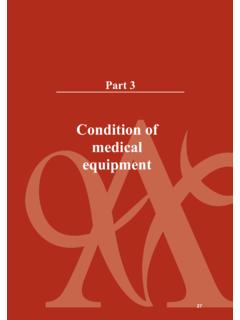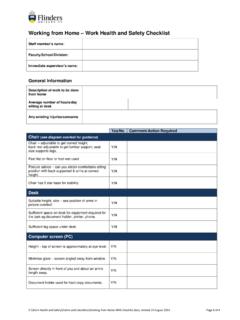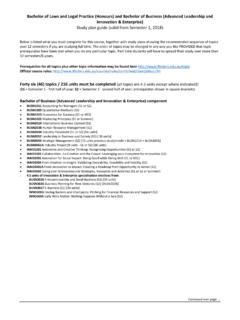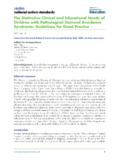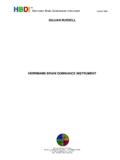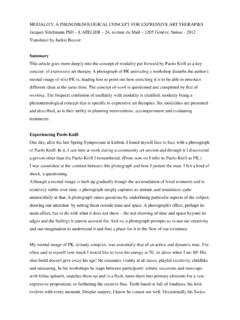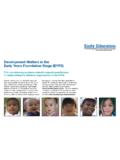Transcription of ALTERING QUESTION COMPLEXITY IN MAXIMISING …
1 TANYA ROBERTS, BRONWYN MACEY & CHRIS BREBNERD epartment of Speech Pathology and Audiology, Flinders University, South ,tobe34 59'southand138 42' ,whichshowedthecoasttobeverylow, 'clockweranthirtymilestothenorthward,ski rtingasandyshoreatthedistanceoffive,andt hencetoeightmiles;thedepthwasthen5fathom s,andwedroppedtheanchoruponabottomofsand , severely intellectually disabled participants aged between 8 and 19 years took part in this study. Each child was assessed by one of two student Speech Pathologists using the Renfrew Action Picture Test [RAPT], (Renfrew, 1988) and a modified version of the RAPT that utilized the different questioning. It was necessary to use different pictures for the modified test to eliminate possible test-retest effects, hence pictures from the Singapore English Action Picture Test [SEAPT] (Brebner, 2002) were used.
2 These pictures were chosen as they have been proven to be of the same picture COMPLEXITY and elicit comparable linguistic targets to those of the original RAPT pictures (Brebner, 2002).The RAPT scores were compared with the modified QUESTION scores which incorporated all the Blank, Rose and Berlin levels by scoring for information (expressive vocabulary) and expressive grammar using the original and an equivalent scoring format. Ten participants responses were scored by both student speech pathologists in order to measure inter-rater QUESTION COMPLEXITY IN MAXIMISINGCHILDREN S EXPRESSIVE LANGUAGE OUTPUTALTERING QUESTION COMPLEXITY IN MAXIMISINGCHILDREN S EXPRESSIVE LANGUAGE OUTPUTINTRODUCTIONF igure 1: Mean test scores on the modified picture test and the modified QUESTION testBlank, Rose and Berlin s (1978) Levels of Questioning framework (see Table 1) was applied to adapt questions used in an expressive language assessment.
3 This allowed children with severe intellectual disabilities to better understand the questions, and elicited more representative samples of their expressive language this study, the framework was used to develop a series of questions for test pictures, enabling the examiner to alter the QUESTION COMPLEXITY and therefore maximise the information/grammar elicited in language samples of children with intellectual 1. Blank, Rose and Berlin s levels of Name Description Example 1 Matching Questions about objects/ What is Perception pictures that are presented this called? to at the time. 2 Selective Questions require thought What do Analysis of about the characteristics ( we do with Perception colour/size) and functions a car?
4 Of objects/pictures in view. 3 Reordering Questions that relate to How are Perception more complex relationships these the between objects/characters. same? They require more abstract thought and use of world knowledge. 4 Reasoning Questions that require What will about reasoning, explaining and happen Perception predicting. The respondent must relate to their own world from Blank, Rose and Berlin, results support the hypothesis that the modification of the RAPT to include Blank et. al. s (1978) levels of questioning allows children with intellectual disabilities to better demonstrate their expressive language skills. The results showed that on the modified test, children scored significantly higher for both information and grammar when compared to their performance on the original indicated that decreasing the COMPLEXITY of the questions elicited better samples of their expressive language capabilities.
5 In the original RAPT, all questions are level two or three (Blank et. al., 1978), and these questions are frequently too difficult for some children with intellectual impairments. However, these participants were able to answer a related QUESTION of lower COMPLEXITY , thus eliciting information where a more complex QUESTION could not be answered appropriately. Asking a related QUESTION of greater COMPLEXITY also gave the participants more opportunity to display their expressive vocabulary and grammar skills. Furthermore, analysis of the modified test gave additional qualitative information on the participants ability to answer questions at each level. RESULTSR esults showed that there was a significant difference between the information scores t(1,23)= , p< and the grammar scores t(1,23)= , p< achieved on both tests with the participants achieving significantly higher scores for both information and grammar on the modified QUESTION test (see Figure 1).
6 2520151050 Score Mean In formation ScoreMean Grammar ScoreX= Pict ure Te stModified QuestionsThe samples obtained from the modified QUESTION test were also analysed to rate the level of questioning achieved by each participant. Blank et. al. s (1978) scoring system was used to determine what level the child was capable of understanding. Figure 2 shows the percentage of participants that achieved each level of 2: Percentage of participants to achieve competency at each level of questioning10080406050 Percentage of Children12 QUESTION COMPLEXITY Level3496%67%38%25%Percentage of part icipantsthat achieved levelInter-tester reliabilityBoth testers scored ten of the RAPT, modified picture and modified QUESTION tests, and the scores were correlated to determine a value for inter-tester reliability.
7 Results showed high inter-tester reliability on all of the tests (see Table 2). Table 2: Inter-Tester CorrelationsTest Information GrammarRAPT of DISCUSSIONL anguage assessment tools need to elicit information that is useful in planning language intervention strategies (Paul, 2001; Pickett & Flynn, 1983). Modifying this assessment instrument produced a test that provides information and grammar scores that can be used to obtain a measure of expressive capabilities and measure progress over time. Additionally, it provides qualitative information on comprehension of levels of questioning and therefore further information about the child s language , M., Rose, S. A. & Berlin, L. J. (1978) The Language of Learning: The Preschool Years.
8 Orlando: Grune & Stratton, Inc. Brebner, C. (2002) The Singapore English Action Picture Test. Published with permission of Speechmark Publishing Ltd. Available through author, contact Paul, R. (2001) Language Disorders from Infancy Through Adolescence: Assessment and Intervention (2nd Ed.) St. Louis: Mosby. Pickett, J. M. & Flynn, P. T. (1983) Language assessment tools for mentally retarded adults: survey and recommendations. American Association on Mental Deficiency, 21(6), , C. E. (1988) Renfrew Action Picture Test. London: Winslow authors would like to thank the Principal, staff and students at St. Patrick s Special School for their assistance in conducting this study.
